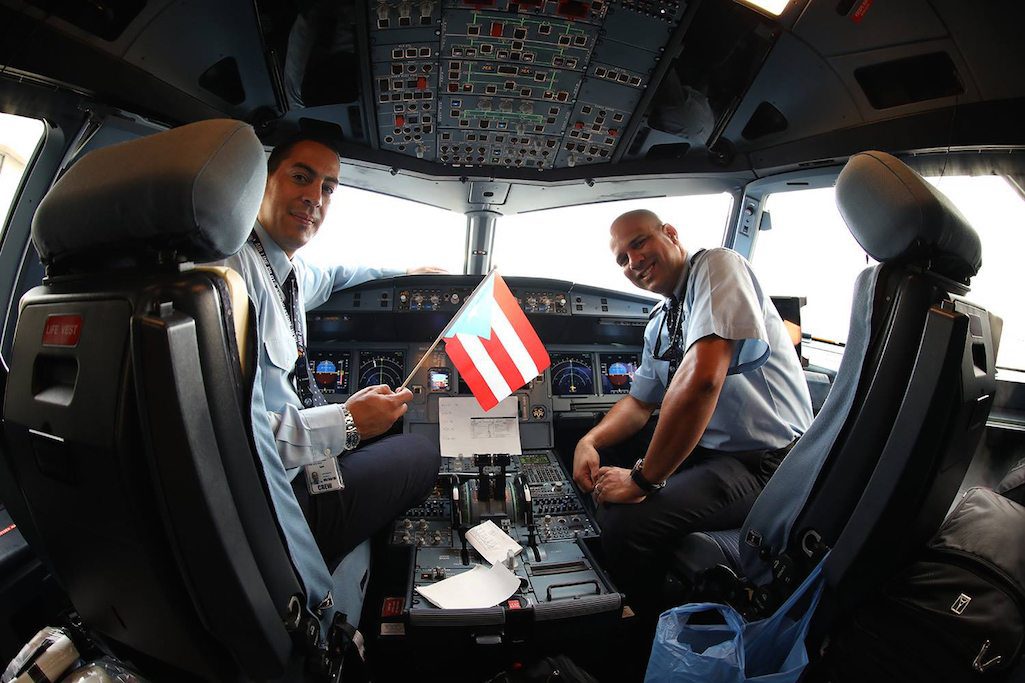Skift Take
It isn't easy being in the aviation business, but airlines have one advantage over a traditional company. Their assets are mobile. If a carrier like JetBlue discovers softness in one region, it can move its airplanes elsewhere.
JetBlue Airways is pruning its Latin America network, cutting flights to Mexico City and reshaping its Caribbean operation so it can improve profitability amid “a series of unique headwinds,” executives said Tuesday on their third-quarter earnings call.
JetBlue will leave Mexico City in early January, three years after it fought to gain prime slots when Delta Air Lines and Aeromexico were forced to give them up to win antitrust immunity. JetBlue, which had been flying from Orlando and Fort Lauderdale, added Boston and New York in late 2018, hoping to attract business and leisure customers from two key Northeast hubs.
But it hasn’t worked as planned, so the airline will withdraw to “ensure that we’re protecting our margins,” President Joanna Geraghty said. Southwest Airlines, which also opportunistically picked up Mexico City slots earlier this decade, pulled out in March for similar reasons.
JetBlue won’t be taking such drastic action elsewhere in Latin America or the Caribbean, but other markets in the region lagged in the third quarter because of “demand and competitive capacity challenges,” Geraghty said. She promised “quick action” to improve poorly performing routes.
The regional weakness was obvious in JetBlue’s third quarter results. Overall revenue per available seat mile, or unit revenue, decreased 0.9 percent, year-over-year, even though domestic unit revenue increased by 3 percent.
However, unit revenues in Latin America and the Caribbean fell in the “high single digits,” Geraghty said.
Overall, JetBlue reported net income of $187 million on revenues of almost $2.1 billion.
Moving Capacity Around
To improve profitability in Latin America and the Caribbean, JetBlue will make “ongoing capacity adjustments,” Geraghty said. But she said the airline is “bullish long-term,” telling investors the region long has produced strong margins.
“We’ve had a long history operating in this region and it’s a region where there are normal puts and takes,” she said. “This year, we’ve obviously seen a bit more pressure, but based on our experience, this is temporary in nature and it will move.”
JetBlue likely will make tactical swaps, moving capacity to countries where demand is highest. Often, Geraghty said, East Coast vacationers avoid one country because of news reports and decide to visit another.
“As we look at the Caribbean, it is an area where we have the ability to redeploy capacity into different markets, and we’ve done that in Punta Cana,” she said. “Customers will continue to travel to the Caribbean region for vacations, and they will just go to other islands.”
While some shorter Caribbean routes are under pressure, Geraghty said the airline continues to thrive with longer routes into South America to airports in Ecuador, Colombia and Guyana.
JetBlue likely will expand in South America once it receives more of Airbus’ newest narrow-body jet, the Airbus A321neo, a longer-range airplane than others in its fleet. But Airbus has struggled to deliver the jet, and JetBlue has received just two.
The airline expects to have six by year-end, seven fewer than planned. JetBlue is optimistic Airbus can catch up next year, Chief Financial Officer Steve Priest said.
“We continue to work through the delays with Airbus and have discussions with them,” he said.
Aircraft Shortage
Since it is short of aircraft, JetBlue has been scheduling flights at less desirable times for customers, so it can get the most out of its fleet. Often, though, airlines struggle to command high prices when they fly early in the morning or late at night.
“We shifted flights to off-peak periods,” Geraghty said. “This has come with some pressure on the quality of flown scheduled. We anticipate these headwinds to be temporary, given our current expectation for Neo deliveries in 2020.”
The Mexico City cuts should free up aircraft for more profitable day-time flights, said Scott Laurence, head of revenue and planning. Next year, JetBlue expects to deploy them on transcontinental routes that do not have Mint, the airline’s business class, as well as on flights from the Northeast to Florida.
JeBlue also will use the aircraft to add flights from the Northeast to the Caribbean during high-demand periods, he said.
Europe Update
JetBlue expects to use a long-range version of the A321neo in its first foray to Europe, with the airline still planning to expand to London in 2021.
Before that happens, JetBlue must secure ETOPS authority, proving to the Federal Aviation Administration it is capable of operating long over-water flights. It is a complicated process, though most established airlines like JetBlue have the wherewithal to win approval.
At JetBlue, it will be an 18-month to two-year process, Geraghty said.
“The work is well underway,” she said. “We’ve got an external party that’s supporting us that has done it before. We’re confident we’ll move through the process as outlined by the regulations.”
The airline still has not decided which London-area airport it expects to serve, she added.
The Daily Newsletter
Our daily coverage of the global travel industry. Written by editors and analysts from across Skift’s brands.
Have a confidential tip for Skift? Get in touch
Tags: airbus, jetblue airways, latin america
Photo credit: JetBlue Airways reported softness in some Caribbean markets. Pictured are two pilots holding a Puerto Rican flag. JetBlue Airways
